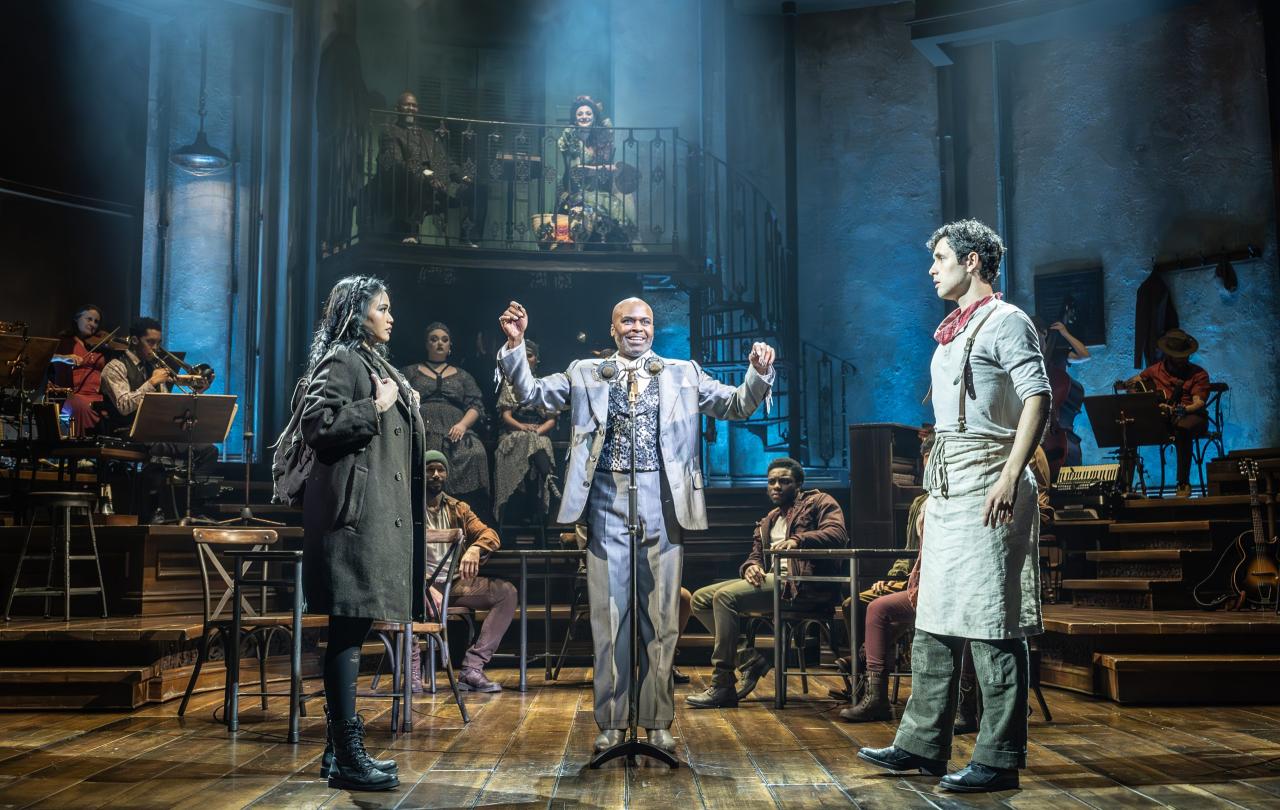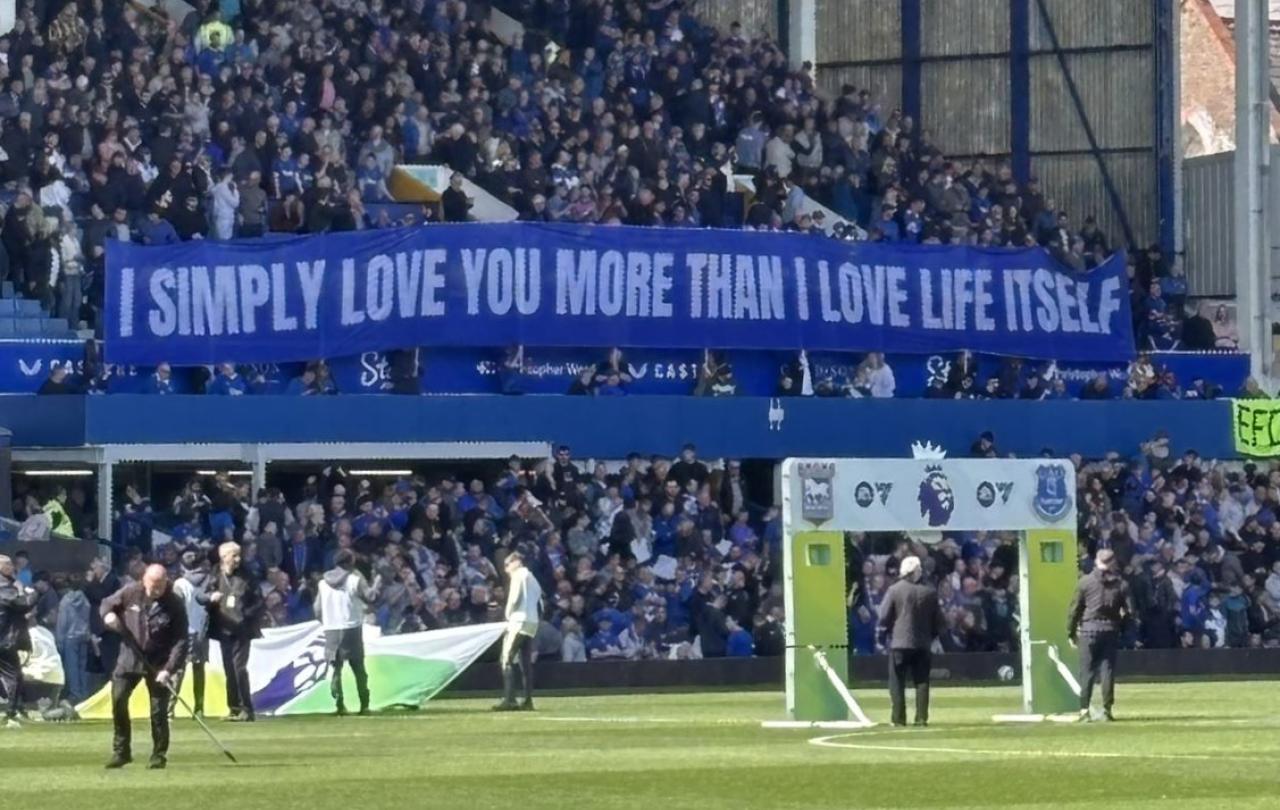
Hadestown – a folk jazz opera interpretation of the tragedy of Orpheus and Eurydice – is currently flourishing in London’s West End. Like the myth upon which it is based, Anaïs Mitchell’s opus has had many iterations. I had been listening to these songs for a decade by the time I saw the stage show. As a Christian priest, I am used to relating all myths, narratives, and fables to the story of Christianity. And yet, it was not until I saw Hadestown performed that the resonance with the Christian “myth” hit me all at once.
In the myth (and the musical), a hero goes down to the underworld to retrieve his beloved from Hades, god of the dead. On Holy Saturday (the day between Good Friday and Resurrection Sunday), the church celebrates Christ’s descent to the dead and his freeing of imprisoned souls. This tradition is commonly known as the Harrowing of Hell. Art imagining this victory often depicts Jesus standing atop hell’s gates, ripped off their hinges, as he plunders the realm of a bound figure. Icons have Christ encircled in ripples of light as if he’s burst through the very walls of time and space to snatch his people from Death’s clutches. In some portrayals, he is pulling Adam and Eve – the original symbols of the rift in the God-humanity relationship – from their graves. The Harrowing of Hell receives more emphasis in Catholic and Orthodox traditions, but all Christians share some concept of Christ as rescuer, saviour, liberator.
In the mythical world of Hadestown, something is broken. The seasons have collapsed, resources are scarce. Trouble in the underworld is causing everything to be off kilter in the overworld (not an uncommon concept in ancient thought). A contemporary audience can certainly relate to references to rising seas and widespread famine, as well as to the futility and despair permeating everyone’s inner monologue. The question the show poses is: can anyone break this cycle? Is there someone who could restore a broken relationship, rescue a soul back from the underworld…even make Spring come again?
Humanity’s potential champion is Orpheus, a young man blessed with a supernatural gift for poetry and music. He is composing a melody “to fix what’s wrong”. When the song is finally sung, “Spring will come again” – the world will come “back into tune”, and “all the flowers will bloom”.
The foil to Orpheus’s optimism is Eurydice, his lover. In this version, she is not killed but leaves for the underground realm of Hadestown, seeking food and shelter. I was moved afresh by her lament (‘Flowers’), sung in the depths of Hadestown’s mines, as Eurydice, like the prodigal son from St Luke’s story, realises what a mistake she has made. Hadestown’s inhabitants, it transpires, are not just trapped by the city walls – they are spiritually captive, indentured to Hades and his vision: eternal industry; perpetual war. Eurydice can no longer remember her beloved’s name, but she can remember that he could make flowers bloom in winter. She sings a petition for him to come and find her “lying in the bed [she] made.”
We the audience know all along that Orpheus is coming, thanks to the song in the preceding act (‘Wait For Me’). Upon learning where Eurydice is, he undertakes the perilous descent to the underworld, all the while repeating “wait for me, I’m coming”. In a breathtaking moment of set design, the walls of Hadestown move aside in response to the beauty of Orpheus’s song. Eurydice’s prayer is answered by his sudden appearance, and his poignant invitation: “come home with me”.
After the bows, the cast toast to the Orpheuses of the world, who show us things as they could be.
Orpheus is soon confronted, however, with the ugly reality of Hadestown. Eurydice has already signed her life away. Beaten and defeated, his innocent worldview shattered, Orpheus sings over and over “is it true?”. He is asking something more fundamental than if what is happening around him is real. He is demanding if this, the world that is, is the world that should be. Should we let the truth belong to those who “load the dice”, he asks?
Hadestown’s walls take pity on Orpheus as they did before, echoing his song through the mines, where the workers – millions of other Eurydices – take up his song. The Dead-to-the-world realise they have been deceived, and remember who they were. And their faith starts to grow – that if Orpheus can walk out of Hades, then they can too. They want freedom.
Persephone, Hades’ estranged queen, is won over by Orpheus. But Hades understands the truth about love: one flower starts a Spring. The fall of a kingdom begins with a crack in the wall. Unwilling to kill Orpheus because of Persephone, Hades instead sets up the famous tragic terms: if Orpheus can walk all the way to the surface without looking back to check Eurydice is behind him, freedom is theirs. It is a test Orpheus is doomed to fail, thanks to his experience in Hadestown. The mentality of the underworld has come to live in Orpheus’s head, and so “the path to paradise” becomes “the road to ruin”, and the story meets its inevitable end.
And yet Orpheus does not fail as completely as he thinks. His musical gift has reconciled Persephone and Hades, and this has brought Spring to the world again. After the bows, the cast toast to the Orpheuses of the world, who show us things as they could be, and leave us with the responsibility to keep singing despite the circumstances, to reject despair, to hold on to that vision of every captive soul walking out of Hell.
Myths tell us what we collectively fear and desire. Contemporary retellings show us how these longings have changed – or not. In what C.S. Lewis called the “true myth” of Christ, we see the fulfilment of Hadestown’s hopeful vision. An early modern hymn describes Christ like Hadestown’s Orpheus – his presence “sees December turn’d to May”, making all the ground of the expectant “under-earth” turn to flowers. He is the one who has walked “the road that no one ever walked before”. The one who didn’t need to persuade the gods to empathise with him, because he was God. The one who was the perfect advocate for humankind, because he was human. Divinity without caprice, love without finitude: the one who experienced fear, temptation, ridicule – and yet did not turn back from the task. A peasant living under occupation: “this poor boy brought the world back into tune”.
I was fortunate enough to see Melanie La Barrie in one of her final performances as Hadestown’s Hermes. Her voice gives the divine storyteller a godparental authority: La Barrie’s Hermes doesn’t so much narrate the story as prophesies it. At the inescapable end of the play, Hermes stands looking down like a graveside mourner, searching for the words to reignite the company. Hermes seems to have a divine vocation to keep telling the tale “regardless of how it ends” until it changes. This act is presented to us as faith, hope, resistance. In this new reality, where Spring has returned and the cosmic order has shifted, the tale might turn out differently upon the next telling, and so Hermes strikes up the band once more.
Every year we sing the sad song again. The betrayal, the trial, the burial: the body in the tomb; the disciples in hiding. For so many, the-world-as-it-is feels like an endless Holy Saturday. The tradition of the Harrowing of Hell whispers to us to hold steady, because the rescuer is coming. “The darkest hour of the darkest night comes right before the dawn”, and a crack is appearing in the wall.
Celebrate our 2nd birthday!
Since Spring 2023, our readers have enjoyed over 1,000 articles. All for free.
This is made possible through the generosity of our amazing community of supporters.
If you enjoy Seen & Unseen, would you consider making a gift towards our work?
Do so by joining Behind The Seen. Alongside other benefits, you’ll receive an extra fortnightly email from me sharing my reading and reflections on the ideas that are shaping our times.
Graham Tomlin
Editor-in-Chief





